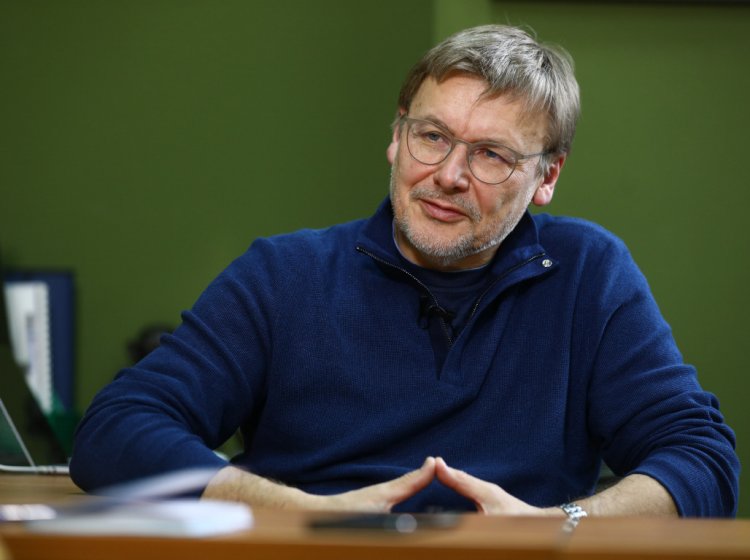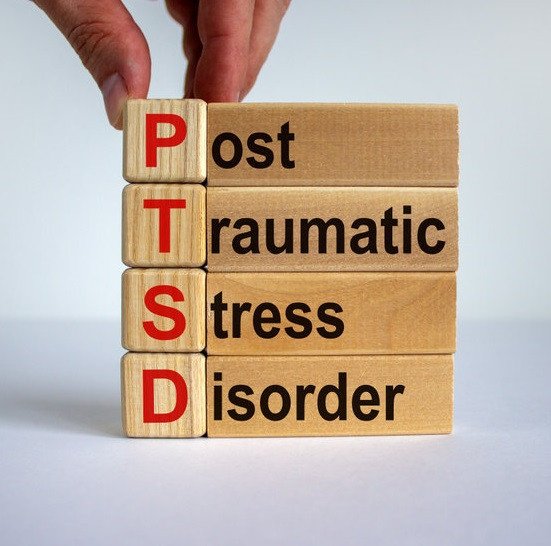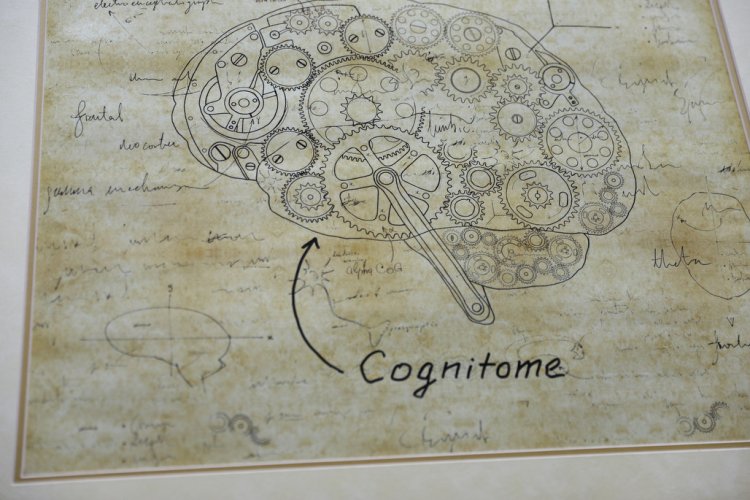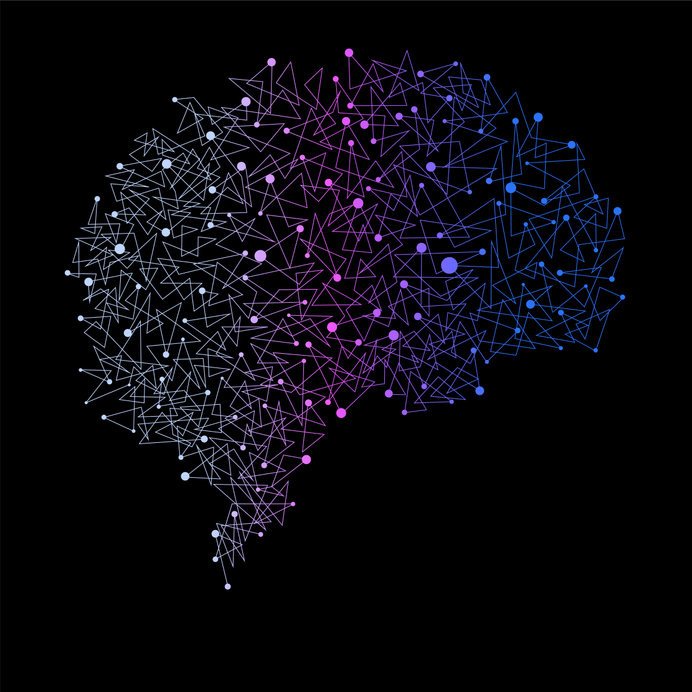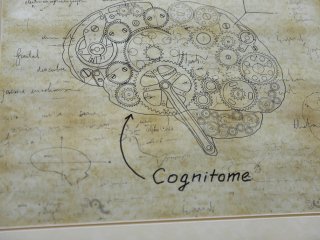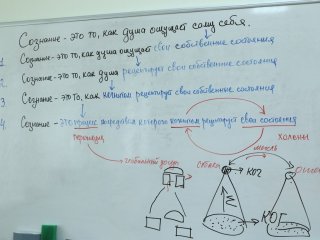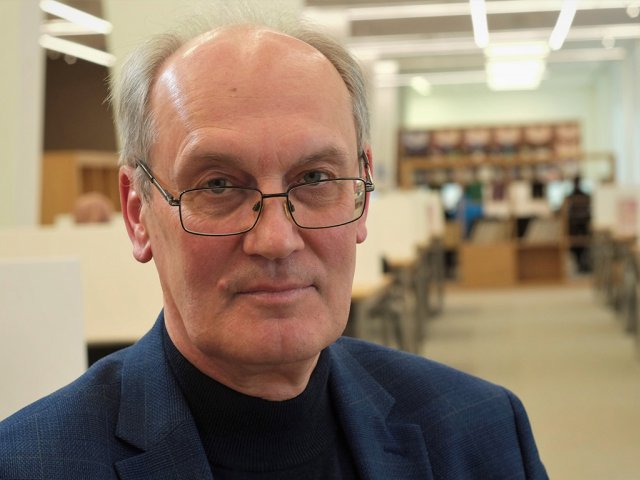Konstantin Anokhin. Photo source: Nikolay Malakhin / Scientific Russia
How is traumatic memory formed, can negative experience affect the offspring? What unusual things can our brain do, and do we have a chance to recover from psychological traumas on our own? Academician and director of the Institute for Advanced Brain Studies, Lomonosov Moscow State University (MSU), Konstantin Anokhin answers these and other questions.
― Sigmund Freud used to emphasize the need to distinguish between fear, anxiety, and fright. Thus, according to Freud, traumatic neurosis occurs only if one experiences fright, that is, something unexpected, for which one has not been prepared. Is this true, and what are the differences between the formation of traumatic memories and normal ones?
― Not just fright, but strong fright. The fright that our body perceives as an existential risk [1, 2]. Therefore, post-traumatic stress disorder (PTSD) is formed by neurophysiological mechanisms that differ from those forming our memories about a traumatic episode itself [3]. In particular, post-traumatic stress is characterized by impaired reactions to many non-specific factors that do not fit the trauma situation. I will give you an example. A person was severely bitten by a dog, which became a post-traumatic stress event. After this event, the person develops fear not only of this particular dog or dogs in general but of many non-specific things, unexpected events, and sharp sounds that have no connection with the initial traumatic situation. Therefore, we have to distinguish between two things. The first one is a specific traumatic event and its memorization by our brain, and the second one is PTSD which develops and even applies to very many behavior patterns unassociated with this event. Studies show that the latter, that is, PTSD, develops gradually and, unlike traumatic memories erasing, requires principally different instruments.
As for the role of the unexpected, memory is generally formed only in situations of some kind of novelty [4, 5]. Even if this is a positive event, it has to have an element of novelty to be remembered and put into our long-term memory.
However, traumatic memories can be stored not only for days, weeks, and months but often for a lifetime. Psychoanalysis and psychotherapy deal specifically with such situations that transform personality due to some event for years, for the entire life, but this is always associated with a strong mismatch. For example, parents beat their child — this situation should not have taken place. Or, a child has a traumatic conflict at school — this situation should not have taken place either.
“Apprehension denotes a certain condition as of expectation of danger and preparation for it, even though it be an unknown one. <…> In my opinion, apprehension cannot produce a traumatic neurosis; in apprehension, there is something which protects against fright and therefore against the fright-neurosis.” Sigmund Freud, Beyond the Pleasure Principle (1920). Photo source: siempreverde22 / 123RF
Significant events in animals’ life can affect their offspring’s behavior
The term “post-traumatic stress disorder” (PTSD) was first used during the Vietnam War (1964-1975). PTSD was diagnosed in soldiers returning from the war zone. In 1968, PTSD was included in the Diagnostic and Statistical Manual of Mental Disorders (DSM) and then in the International Classification of Diseases (ICD). Photo source: dmitrydemidovich / 123RF
― We know that new memory activates gene expression, which was confirmed in animals, so can PTSD be inherited?
― This is a controversial question. Some time ago, I would have said “definitely no.” However, recent studies conducted in the past 10-15 years, and, namely, those performed by the laboratory of Isabelle Mansuy, show that significant stress events in animals’ life can affect the behavior and brain function of their offspring [6, 7]. Of course, it does not mean that animals will remember what happened to their parents. Rather, it means that the stress reaction that occurred in their parents can change settings in the work of genes responsible for nervous system development, first, in a fertilized egg, and, then, in a grown organism, through molecular factors, the nature of which is still being studied. These can be, for example, specific regulatory microRNAs or small non-coding RNAs, DNA methylation, and other factors of epigenetic modifications of germ cell chromatin that change the functions of their genome. They will not be specifically adjusted to this behavioral impact, but they will prepare the newborn’s body for the risk of encountering this kind of stress. I will explain what I mean with an example, where the body encounters harmful environmental factors, but they are physical or chemical rather than psychological. It was demonstrated [8, 9] on some animal species, namely, insects that faced, for example, a drought or an increase in environmental temperature. Their offspring is better adapted to develop in similar conditions, unlike the offspring of the same species that lived in a comfortable environment before breeding. Thus, physical or chemical environmental factors tune offspring’s body through germ cells to the fact that their environment can be exactly like this.
― And do humans demonstrate something of that kind? I mean the impact of environmental factors, lifestyle, and the like on their offspring.
― Humans, for example, have a form of hereditary alcoholism associated with epigenetic mechanisms. That is, it is hereditary not because this is a classic genetic predisposition, but because the parents were addicted to alcohol and, as a result, their children have an increased predisposition to alcoholism. This assumption was tested in observations of adopted children who had never encountered their biological parents with alcohol addiction but had been living in prosperous foster families from their early childhood. However, it was noticed that such children have altered sensitivity to alcohol, altered electroencephalogram, some types of higher nervous activity, and that they are prone to developing alcoholism.
We studied this phenomenon in animals in the 1990s at P.K. Anokhin Institute of Normal Physiology and the National Research Center on Addictions. If a male mouse was exposed to specific opioids or alcohol, but the female who conceived from it was not exposed to such impacts and grew its fetus in unchanged physiological conditions, their offspring still had a high mortality rate. In the first few days, many newborn mice were slowly gaining weight or could even die. However, the most important things happened later. It turned out that such mice reacted to opioids differently: they needed a lower dose to get an analgesic effect, and were more likely to develop an addiction.
Based on our findings, my hypothesis is as follows: when the body of a parent animal encounters some unexpected changes in an external or internal environment, it begins to adapt to them with the available resources.
These can be biochemical transformations, changes in the sensitivity of some receptors, activity of some enzymes that break down alcohol in blood, changes in the sensitivity of opioid receptors, and so on. And then these transformations are transmitted to the offspring through germ cells and the above-mentioned genome modification mechanisms. Thus, the offspring is born with an expectation at the physiological level that the internal or external environment will be the same as that of their parents: for example, that they will have a lot of alcohol or opioids in their blood. However, when animals do not receive these substances, many of their physiological mechanisms are disturbed, they develop abnormally and die. Studies show that such animals have impairments in many systems of their brain, namely in neurochemical systems associated with specific mediators involved in the transmission of signals between nerve cells. However, if such animals receive a dose of alcohol (if their parents were alcoholics) or opioids (if their parents had this very addiction), these biochemical disorders get normalized. Thus, the setting that their parents passed on to them will be “normal” for the offspring. Physiologically, they feel well only when this factor exists inside their body in the right concentration: the same as in their parents’ bodies. And thus they start looking for it. First of all, their body increases the sensitivity of its receptors to get the desired effect even from small doses of opioids or alcohol. If mice with this hypersensitivity start to receive alcohol or opioids, they develop addiction much faster than other animals.
This molecular genetic mechanism responsible for the transmission of specific instructions from a parent organism to the offspring explains many aspects of the accelerated development of addiction in the children of parents who suffer from alcoholism or drug addiction. There is nothing mystical about this epigenetic inheritance mechanism. As a rule, it extends only to one or two generations. If the third generation does not have this parental factor, that is, if this addiction is not reinforced, this effect disappears. Thus, these are unstable genetic rearrangements, the so-called epigenetic changes in genome functioning caused by chromatin structure modification and DNA methylation processes in specific genes that were involved in the adaptation process in parents. The surprising thing is that we observe something similar when it comes to the epigenetic inheritance of stress effects: a transformation of the central nervous system and a number of genes responsible for a stress response. These are not specific genes that respond to the chemical factor, which is relevant to opioids or alcohol, and, of course, not a specific memory of trauma in parents. Apparently, it has to do with passing on to children some kind of warning and readiness to tune their non-specific stress mechanisms to the fact that they can encounter danger in the environment. However, there is still a lot of uncertainty in this area.
― We know that sports are associated with the production of endorphins, dopamine, and so on. Can we eliminate the imbalance that you are talking about by doing sports?
ATTENTION! Drugs harm your health, create a threat to your life and entail administrative and criminal liability.
― A nice idea! I am unaware of such studies, but this can be true. It is obvious that the balance is very complicated here: endogenic opioid systems and a release of endorphins do not replace the narcotic effect. But the idea is very interesting and even potentially useful. It is no secret that Russia is facing chronic alcoholism, while other drug dependencies have also become a serious problem in recent decades, so we have serious concerns about the health of children born by such parents. If they run a risk of developing addiction, then maybe some types of physical activity may protect them.
When we recall something, our memory becomes susceptible to erasing
― Let us return to traumatic memory. In one of your lectures, you said that when people recall an event and this recollection is followed by new information that they need to remember, the latter interferes with the former. And so the old memories can be prevented from reconsolidation. Can we get rid of psychological traumas in this way without using drugs?
― There are several important aspects here. When I said that every recollection, memory reactivation is also its reconsolidation, that is, the process of its rearrangement in our brain, I was simplifying the situation. When we discovered this phenomenon in the mid-1990s, I created an internal laboratory slogan that contradicted the common understanding of memory neurobiology at that time. This slogan, which guided our studies, would bring together several ideas. The first one is that memory reactivation, or its retrieval, is an active process of memory trace reconstruction by the brain in which the neural network “recomposes” our recollection. The second one is that each recollection reconstruction is also some kind of its recategorization: you retrieve your memory in new settings, under new circumstances and you are no longer that very person who remembered this recollection. You have acquired other elements of experience. Therefore, at the moment when this memory trace is retrieved, it is brought in line with the state in which your body is at the moment. This recollection is re-evaluated — recategorized. And the third part of the slogan is that each recategorization that actually creates a new memory trace leads to reconsolidation, that is, repeated memorization of this new trace.
However, later our studies made us realize that such a system is incomplete. If my manipulation skill (and this is also memory, motor memory) was recategorized and remembered again every time I take a pencil and use it, it would be a disaster, because everything could interfere in this process. We understood that this cascade of recategorization and reconsolidation is launched only when the memory retrieval occurs in conditions of novelty, a surprise if we again recall Freud. The routine use of experience, for example, when I go along a corridor and retrieve motor limb movement programs from my memory, does not lead to the repeated memorization of these programs of actions and does not launch a restructuring in the work of genes in the corresponding neural networks of my brain. However, if, for example, you tie two fingers on one hand together, then many common activities that you used to do with this hand will turn out to be unusual. And just at this moment, the retrieval of memory, in this case, a motor skill, is accompanied by its reconstruction, recategorization, and reconsolidation. The reproduction of something we have known for a long time starts. Genes that recreate a modified trace of what we consider to be one and the same memory begin to work in the brain.
Konstantin Anokhin discovered genes that are activated in the brain during learning and memory formation and proved the role of genes belonging to the family of immediate early genes in the fixation of various forms of long-term memory and stable pathological conditions of the nervous system. Photo source: Nikolay Malakhin / Scientific Russia
Konstantin Anokhin is the author of the hypernetwork theory of the brain that introduces a concept of special essential brain organization, that is, a neural hypernetwork where the maximum causal force of the brain — the psyche — is embodied. Anokhin’s theory describes the configuration of this nervous structure (hypernetwork) and the principles of its emergence and functioning. Photo source: Nikolay Malakhin / Scientific Russia
― Do you mean that memory is the same, but the neurons involved in every new recollection are different every time?
― Neurons are most often different. Or, the neuron can be the same, but it will be working through other inputs. After all, a neuron may be activated as part of a usual recollection when signals come to it not via the same synapses or contacts from old neighbors, but via other channels. Therefore, even if neurons remain the same, although usually, some neurons are different, this is still a new event for them, because other partners made the neurons work in this recollection. That is, the neural ensemble configuration changed. All this leads to a situation where this event is remembered again. Meanwhile, at first, we thought that the old trace was erased.
― However, it is simply suppressed, isn’t it?
― Yes. During the first years of our studies, my hypothesis was that the old trace was erased to form a new trace instead of it. However, the findings of our experiments made us abandon this idea. We unexpectedly found out that the old, seemingly erased memory returns under specific conditions [10]. Based on this, I developed a multiple-trace memory hypothesis. It states that each reactivation in novelty conditions creates a new copy of a recollection. Thus, you can have many layers — different versions, or copies — of the same recollection. It is similar to a layer cake, and it seems that the top layer of this cake displaces the previous ones at the time of memory access, and dominates them. If you artificially — and this is what we do in our experiments — prevent the top layer from forming, then the old recollections will be suppressed anyway, they will go into the reserve, but new ones will not appear. It turns out that you have plenty of old traces, but they cannot get out, as you have not allowed the last copy of your recollection to form using drugs or in some other ways. I cannot say the old recollections were erased. It seems that the old traces are naturally suppressed when a new trace is being created. And when we prevent the latter from forming, we make this entire multi-layer “sandwich” fall silent in this way.
― How can we do that on our own?
― There is still room for experiments here. This is a hypothesis that needs to be checked. The assumption is that to activate the processes described above, you have to recall them in the conditions of a new unusual situation or new information. And how to create this novelty is another issue. I will name one more restrictor for my hypothesis: probably, the content of this novelty should belong to the same field where my recollection is.
Please imagine that our memory is a tree. If you create a novelty as a condition for changing old recollections, but you start doing that from an inappropriate branch, then the attempt will probably fail. Your initial recollection lies within interpersonal relations, but you add novelty from the perception of painting or poetry.
In this case, the novelty that you create on this branch of your experience will not “work” at all, it will not reach another branch that you want to make labile and change. Maybe you have to select the impact and the new information that would relate to your initial recollection. Thus, if you want to change some of your recollections, say, about your school days and relationships with someone during this period, then maybe you have to use some kind of novelty as reminders about this school. For example, it can be a photo of your school class. That is, you have to turn to the same branch, the same ensemble of nerve cells where the initial recollection lies. I do not know whether it will work or not, but I would prioritize this aspect specifically. However, overall, this area is practically unexplored in neurobiological experiments.
You cannot kill all neurons participating in a recollection
― Why can recollections come back? We see this in experiments with animals, even if their memory is treated with drugs. Why are recollections not erased forever?
― Yes, sometimes recollections spontaneously return with time. It seems that control gets weaker and they crawl out of the “closet” on their own, regardless of the experimenter. That is, there is kind of specific dynamics of our brain, the inner life of a memory trace. In our experiments, we see that in some time an animal recalls the initial event a little better, then, a lot better, and finally the entire recollection returns. In chickens, this process is faster taking one day, while mice need about two weeks for that. This is probably a kind of spontaneous weakening of overwhelming control that arose at the time of reactivation due to an impossibility to memorize a new trace of the old memory. And this does not always happen. I have no good explanation for this phenomenon now.
There is some factor that is still unknown to us and that sometimes helps to release memory traces and does not allow that othertimes.
“Most often, amnesias are caused not by the loss of an ability to fix memory but by the loss of an ability to reproduce fixed memory. <...> It turns out that, although the patient cannot resolutely remember what has just happened, its trace remains in the patient’s psyche and, after a while, maybe a year later, suddenly pops up in the mind.” Sergei Korsakov (1854–1900).
Besides, multiple facts and observations show that the return of the old memory may depend on reminiscent impacts that we can use in our experiments to return an animal’s recollections at our own discretion. Overall, now I would say with greater confidence than earlier that it is hardly possible to solve the problem with single impacts on our old memory at the time of its retrieval. Apparently, there are other ways to make the memory collapse and leave.
― How many neurons can take part in recollection?
― Many millions of neurons can be activated in a person when a strong recollection is being formed in the brain. Let us say the number is 150 million which equals the population of our country. Please imagine what a huge country it is! Besides, all these neurons are functionally connected, and their collective existence is this trace of memory. Here we have a natural question: how can such a huge and distributed neural community be destroyed? You cannot find every neuron in this “brain country” that participated in this collective activity to erase a recollection in it in a targeted way. Probably, only a part of them can be destroyed. For example, you can introduce a substance to launch indiscriminate destruction of nerve cells or weaken synapses, the ties between neurons in the brain. As a result, many neurons will die. Maybe 20-30 of those 150 million could die. However, 120 million will remain to continue constituting this recollection. Of course, there is some kind of threshold value, after which a recollection will not be retrieved. We can say that we have undermined or destroyed this recollection by damaging the critical mass of ties between 150 million neurons. However, there is still a question: even in this case, have you completely destroyed the memory trace that consisted of 150 million neurons or not? And what if I start pulling these 120 remaining million neurons and they begin to build the ties lost between them, and this recollection comes back? I mean that it is still difficult to answer the question of whether it is possible to completely destroy recollections and forget different things. The fact that you forget them at the psychological or behavioral level, that you do not have access to them and you cannot recall them, still does not mean that you have finally erased this recollection in your brain. Probably 80% of this trace lies somewhere and there is a condition under which it can be recovered. If you can return it, it means that this memory trace has not disappeared, but simply existed in a different state. We are yet to conduct very exciting research here.
“... Would you like the temperature of your right hand to rise, and that of the left one to decrease? Let’s start…”
― We know examples where people have extraordinary abilities. For instance, famous mnemonist Solomon Shereshevsky could stop the pain, change the temperature of his hands and regulate his heart beating using his imagination (as Alexander Luria wrote in the book The Mind of a Mnemonist: A Little Book about a Vast Memory based on his observations). It is hard to imagine how you can do something like that at your wish… Is imagination really such a powerful thing?
― It is certainly powerful, as we have such examples. Another question is how many years of special training people who do not have Shereshevsky’s abilities from birth will need to achieve this. We know such techniques from yoga and Buddhist meditation. As far as you understand, by no means all children born in Buddhist monasteries are Shereshevskys; probably, there is not a single Shereshevsky in their generation, and yet many of them achieve the same capabilities. For instance, voluntary regulation of the heart rate up to a complete cardiac arrest, arbitrary changes in body temperature, and so on. It appears that there are several ways to achieve such control over your body with the help of the brain. As far as we understand, Shereshevsky did it as a spontaneous action in his unique brain.
My hypothesis (however, I will specifically emphasize that it is only an assumption) is that Shereshevsky’s brain was formed by the time of birth differently from the rest of us while maturing in the embryonic period. His unusual abilities — the very vivid recollections of his early childhood — indicate that the ability to vividly remember and retain recollections of what happened to him was already present in his early childhood, that is in the first months of his life and his brain was already altered by then. Shereshevsky’s numerous synesthesias also indicate that his brain was arranged in a special way. It is known that initially, during brain development, significantly more contacts are established (and among a larger number of structures) than remain afterward. Many of the ties that exist in the brain structures in the embryonic period die off by the time of birth.
It seems that Shereshevsky had some kind of developmental mutation, that is, an abnormality in the genes responsible for the formation or destruction of ties in the brain. Thanks to this mutation, these ties did not disappear as they should have disappeared and as it happens to all of us. Therefore, his brain was rich in very different ties that, among other things, allowed him to experience the richest states of synesthesia: the associations of taste with color, sound with tactile perception, and so on.
“…When I want something, imagine something, I don’t have to make efforts, it does it by itself…”. Solomon Shereshevsky (1886–1958).
There is another interesting point. Shereshevsky with his phenomenal memory suffered greatly throughout his life from the inability to forget the things he saw. It especially bothered him when he worked as a mnemonist on stage. He wrote down all the numbers to be read from memory to the audience on the same board, memorized them, and erased them for every new session. As a result, these tables with numbers from the previous session remained in his memory preventing him from starting a new number. Shereshevsky tried many different ways to learn to forget: mentally covering the board with a film, burning pieces of paper with information that he had to forget, and so on. At one point, after many fruitless attempts, he simply said, “I don’t want to remember this.” It worked! Apparently, such a state was some kind of integration of the work of multiple connected memory controlling structures of his brain. It caused the recollection to disappear. Most likely, Shereshevsky did not forget but simply suppressed this recollection, like many other memories later. According to the same principle, probably, due to similar integrative states in the brain, the images he evoked in his imagination could reach his somatic organs. This targeted activity enabled his brain to reach the heart activity that is naturally controlled by the nervous system. After all, our body is almost entirely under the nervous system’s control. Yoga and Buddhist meditation show that one can do something similar without being Shereshevsky.
The resting state network concept refers to the activity of neural networks in the human (animal) brain in the state of wakefulness but uninvolved in activities that require directed attention. Reference source: C. Rosazza, L.Minati. Resting state brain networks: literature review and clinical applications. Neurol Sci. 2011; 32(5):773-85. Photo source: vladystock / 123RF
― Speaking about meditation, there are so-called resting state networks where experienced traumatic patterns can be replayed without reaching the level of consciousness. In one of your lectures, you described how meditation might be able to influence these resting state networks. What do we know about this today?
— It is still an assumption, and it is still impossible to verify it today. The point is that currently available methods allow us to detect the activity of resting state networks, but we cannot identify what kind of subjective experience is replayed in them: traumatic or any of thousands of other variants. Of course, there are indirect ways such as by involving the activity of brain structures associated with emotions in a resting state network. But this is an unreliable indicator as emotional structures can be activated for many other reasons. However, although we do not have direct evidence of the effect of meditation on the replay of the traumatic experience in resting state networks, there are already quite a lot of studies on the effect of meditation on the overall activity of resting state networks, and they reveal noticeable effects [11, 12]. You are absolutely right in that this area deserves further scientific experiments. With time, people will probably get to the bottom of this problem and find out what effects meditation has on traumatic experiences in resting state networks. Such thoughts are already circulating in the scientific community. If science has a clear task, its solution will inevitably appear.
References:
- Toropova K. A., Ivashkina O. I., Anokhin K. V. Posttraumatic stress disorder: theoretical framework and animal models // Pavlov Journal of Higher Nervous Activity. 2021. V. 71. No. 6. P. 735–759.
- Ressler K. J., Berretta S., Bolshakov V. Y., Rosso I. M., Meloni E. G., Rauch S. L., Carlezon W. A. Jr. Post-traumatic stress disorder: clinical and translational neuroscience from cells to circuits. Nat. Rev. Neurol. 2022 May; 18 (5): 273–288.
- Fenster R. J., Lebois L. A. M., Ressler K. J., Suh J. Brain circuit dysfunction in post-traumatic stress disorder: from mouse to man. Nat. Rev. Neurosci. 2018; 19 (9): 535–551.
- Anokhin K. V., Sudakov K. V. The systemic organization of behavior: novelty as a leading factor of the expression of early genes in the brain during learning // Uspekhi Fiziologicheskikh Nauk. 1993. No. 24 (3). P. 53–70.
- Fernández G., Morris R. G. M. Memory, novelty, and prior knowledge. Trends Neurosci. 2018; 41 (10): 654-659.
- Bohacek J., Farinelli M., Mirante O., Steiner G., Gapp K., Coiret G., Ebeling M., Durán-Pacheco G., Iniguez A. L., Manuella F., Moreau J. L., Mansuy I. M. Pathological brain plasticity and cognition in the offspring of males subjected to postnatal traumatic stress. Mol. Psychiatry. 2015; 20(5): 621–31.
- Jawaid A., Roszkowski M., Mansuy I. M. Transgenerational epigenetics of traumatic stress. Prog. Mol. Biol. Transl. Sci. 2018; 158: 273–298.
- Bateson P., Gluckman P., Hanson M. The biology of developmental plasticity and the Predictive Adaptive Response hypothesis. J. Physiol. 2014; 592 (11): 2357–68.
- Hu J., Barrett R. D. H. Epigenetics in natural animal populations. J. Evol. Biol. 2017; 30 (9): 1612–1632.
- Litvin O. O., Anokhin K. V. Mechanisms of memory reorganization during retrieval of acquired behavioral experience in chicks: the effects of protein synthesis inhibition in the brain // Pavlov Journal of Higher Nervous Activity. 1999. No. 49 (4). P. 562-565.
- Sezer I., Pizzagalli D. A., Sacchet M. D. Resting-state fMRI functional connectivity and mindfulness in clinical and non-clinical contexts: a review and synthesis. Neurosci. Biobehav. Rev. 2022; 135: 104583.
- Feruglio S., Matiz A., Pagnoni G., Fabbro F., Crescentini C. The impact of mindfulness meditation on the wandering mind: a systematic review. Neurosci. Biobehav. Rev. 2021; 131: 313-330.
